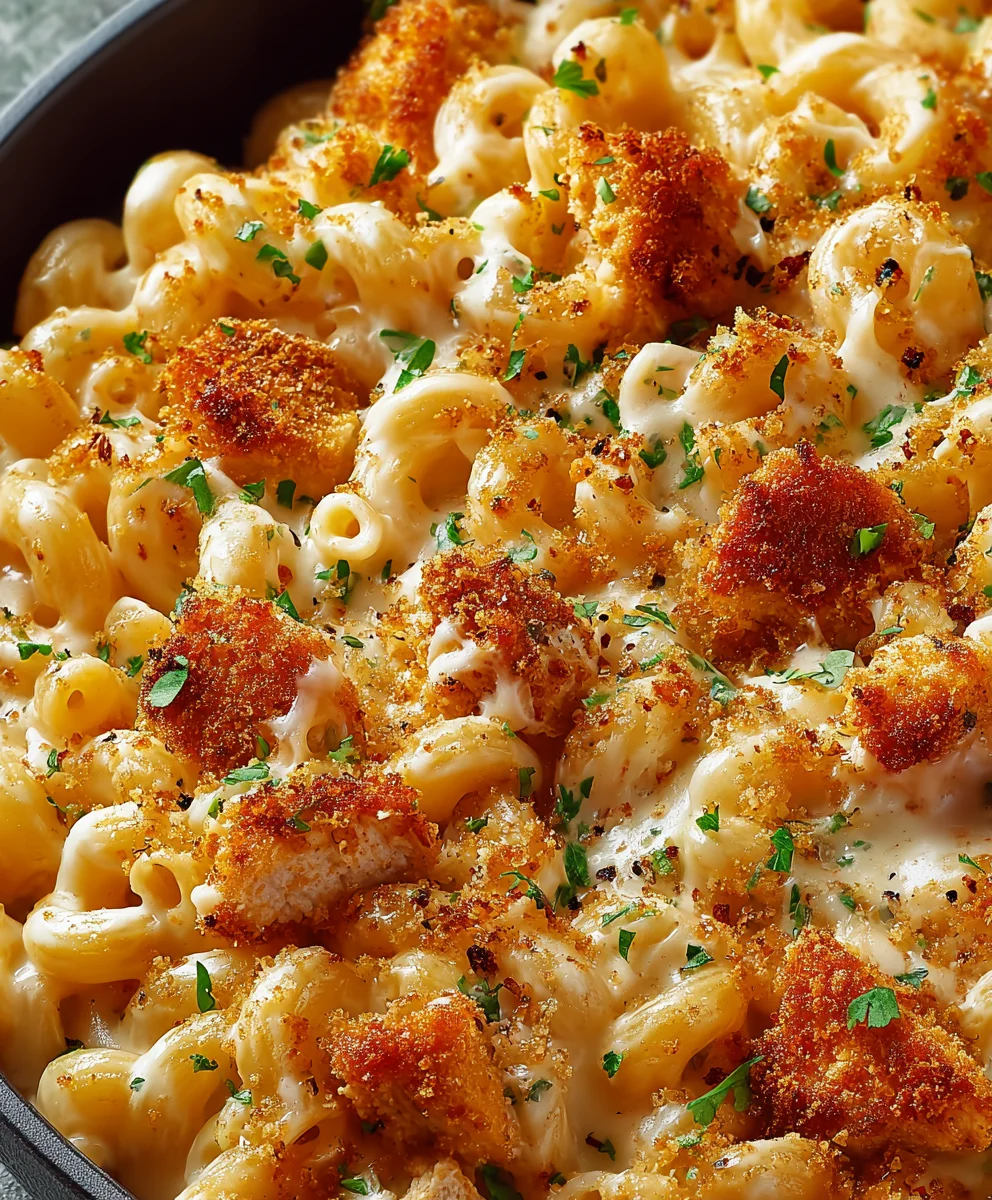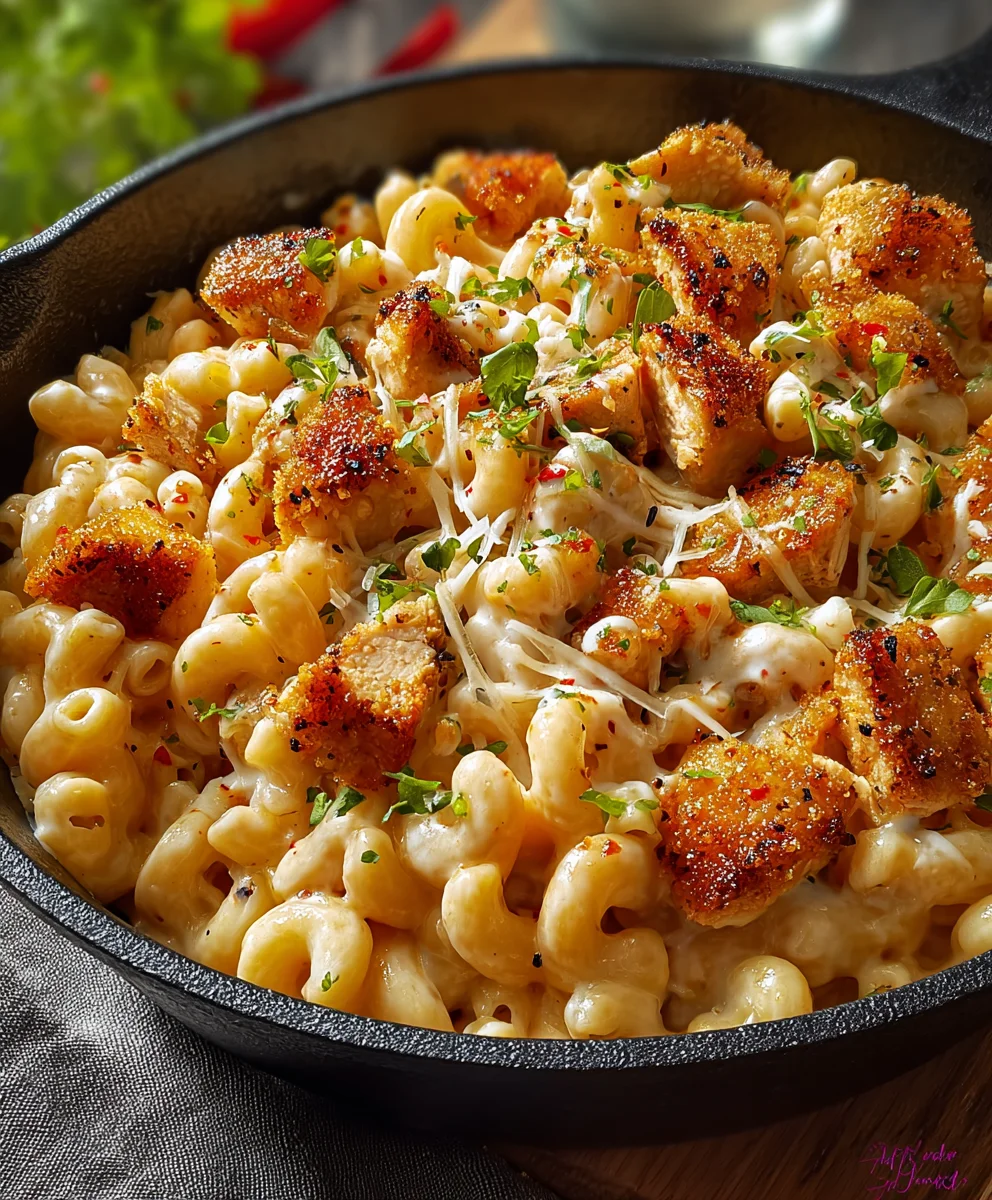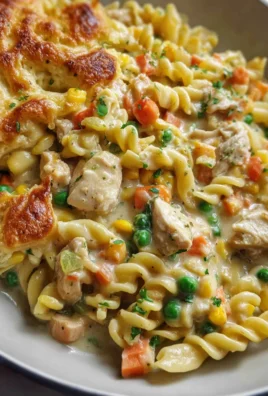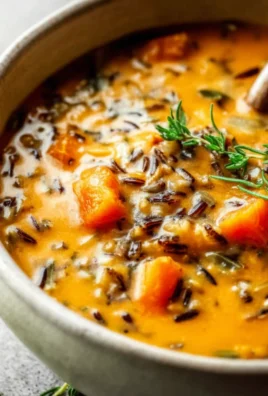Classic Homemade Lasagna is more than just a dish; it’s an edible embrace, a symphony of flavors and textures that evokes warmth, comfort, and cherished memories around the dinner table. For centuries, this iconic Italian staple has graced kitchens worldwide, evolving from humble origins into the elaborate, layered masterpiece we adore today. Its roots trace back to ancient Rome, though the version we recognize truly blossomed in Italy, becoming a cornerstone of Sunday family meals and celebratory feasts. What is it about this dish that captivates so many? Perhaps it’s the rich, savory meat sauce, slow-simmered to perfection, or the creamy ricotta, often blended with Parmesan and mozzarella, creating pockets of melty delight. Then there are the perfectly al dente pasta sheets, binding everything together, absorbing all the wonderful flavors. Every forkful of Classic Homemade Lasagna offers a harmonious blend of tangy tomatoes, aromatic herbs, tender meat, and gooey cheese, promising a truly satisfying experience that appeals to every generation. I find myself constantly drawn to its comforting presence, making it a beloved centerpiece for any gathering.
Ingredients:
-
For the Rich Bolognese Sauce:
- 2 tablespoons olive oil, extra virgin preferred
- 1 medium yellow onion, finely diced
- 2 medium carrots, peeled and finely diced
- 2 stalks celery, finely diced
- 2 cloves garlic, minced
- 500g (1.1 lbs) ground beef, 80/20 lean to fat ratio for best flavor
- 200g (7 oz) ground pork, or Italian sausage (casings removed) for added depth
- 150ml (2/3 cup) dry red wine (like Chianti or Merlot), optional but highly recommended
- 800g (28 oz) can) crushed tomatoes, good quality San Marzano if possible
- 100g (3.5 oz) tomato paste
- 250ml (1 cup) whole milk, optional, for tenderness and richness
- 1 large bay leaf
- 1/2 teaspoon dried oregano
- Pinch of freshly grated nutmeg
- Salt and freshly ground black pepper, to taste
- Small bunch fresh basil or parsley, for garnish (optional)
-
For the Velvety Béchamel Sauce:
- 100g (7 tablespoons) unsalted butter
- 100g (3/4 cup) all-purpose flour
- 1 liter (4 cups) whole milk, warmed gently
- 1/2 teaspoon salt, or to taste
- Pinch of freshly grated nutmeg
- Pinch of white pepper (optional, for color purity)
-
For the Lasagna Assembly:
- 12-16 sheets lasagna noodles, oven-ready (no-boil) or fresh pasta sheets are ideal. If using traditional dry pasta, cook according to package directions until al dente.
- 200g (7 oz) freshly grated Parmesan cheese, divided
- 200g (7 oz) freshly grated mozzarella cheese, low-moisture whole milk preferred, divided
- 2 tablespoons olive oil, for greasing the baking dish
Phase 1: Preparing the Bolognese Sauce (The Heart of the Lasagna)
This is where the magic begins, my friends! A truly great lasagna starts with a deeply flavorful, slow-cooked Bolognese. Don’t rush this step; it’s an investment in deliciousness!
- Sauté the Aromatics: In a large, heavy-bottomed pot or Dutch oven, heat the 2 tablespoons of olive oil over medium heat. Add the finely diced onion, carrots, and celery (this trio is often called a soffritto, the flavor base of Italian cuisine). Cook gently, stirring occasionally, for about 8-10 minutes, until the vegetables have softened considerably and the onion is translucent. We’re not looking for browning here, just a gentle coaxing of their natural sweetness.
- Add the Garlic and Meat: Stir in the minced garlic and cook for another minute until fragrant. Then, add the ground beef and ground pork (or Italian sausage) to the pot. Break up the meat with a wooden spoon and cook over medium-high heat, stirring frequently, until it’s beautifully browned all over. This browning is crucial; it develops rich, savory flavors through the Maillard reaction. Drain off any excess fat if there’s a lot, leaving just enough to keep things moist.
- Deglaze and Enhance Flavor: Once the meat is thoroughly browned, stir in the tomato paste and cook for 2-3 minutes, stirring constantly. This step caramelizes the tomato paste, deepening its flavor. Now, pour in the dry red wine (if using). Increase the heat to high and scrape up any browned bits from the bottom of the pot with your spoon. Let the wine simmer vigorously for 3-5 minutes, allowing most of the alcohol to evaporate, leaving behind a concentrated, rich flavor.
- Simmer the Sauce: Reduce the heat to low. Stir in the crushed tomatoes, whole milk (if using), bay leaf, dried oregano, and a generous pinch of freshly grated nutmeg. The milk, while optional, adds an incredible tenderness to the meat and balances the acidity of the tomatoes beautifully. Season generously with salt and freshly ground black pepper. Bring the sauce to a bare simmer, then cover the pot and cook for at least 2-3 hours, or even longer (up to 4 hours is fantastic), stirring occasionally. The longer it simmers, the more the flavors meld and deepen, and the meat becomes incredibly tender. If the sauce becomes too thick during simmering, you can add a splash of water or broth.
- Finishing Touches: Once the Bolognese has simmered to perfection and is wonderfully thick and rich, remove the bay leaf. Taste and adjust seasoning as needed. If you like, stir in a handful of fresh basil or parsley just before assembling.
Phase 2: Crafting the Silky Béchamel Sauce
A classic béchamel is the creamy, luscious counterpoint to the rich Bolognese. It provides moisture, binds the layers, and adds an undeniable elegance to your lasagna. It’s surprisingly simple to make, just requiring a little attention.
- Melt the Butter: In a medium saucepan, melt the unsalted butter over medium-low heat. Be careful not to let it brown, we want a pale, creamy sauce.
- Make the Roux: Once the butter is fully melted and foamy, add the all-purpose flour all at once. Whisk constantly for 1-2 minutes, forming a smooth paste called a roux. This cooks out the raw flour taste. The roux should be pale yellow, not browned.
- Gradually Add Milk: Take the saucepan off the heat for a moment. Gradually whisk in the warmed whole milk, a little at a time. It’s important to add it slowly at first, whisking vigorously to incorporate each addition and prevent lumps. Once you have a smooth, thick paste, you can add the remaining milk a bit more quickly.
- Thicken the Sauce: Return the saucepan to medium heat. Continue to whisk constantly (and I mean constantly!) as the sauce comes to a gentle simmer and thickens. This usually takes about 5-8 minutes. The sauce should be thick enough to coat the back of a spoon. If it seems too thick, you can whisk in a little more warm milk. If it’s too thin, let it simmer a little longer, whisking, or make a very small slurry of flour and water/milk, whisk it in, and cook for a few more minutes.
- Season the Béchamel: Once thickened, remove from heat. Stir in the salt, a pinch of freshly grated nutmeg, and white pepper (if using). Nutmeg is a traditional and wonderful pairing with béchamel, enhancing its creamy notes. Taste and adjust seasoning. Keep the béchamel warm, or cover it directly with plastic wrap to prevent a skin from forming if you’re not using it immediately.
Phase 3: Prepping the Pasta and Assembling the Lasagna
Now for the fun part – bringing all these glorious components together! This is where your individual layers come to life, building up to that magnificent final dish. Get your largest baking dish ready!
- Preheat Oven and Prep Dish: Preheat your oven to 190°C (375°F). Lightly grease a large, rectangular baking dish (typically 9×13 inches or similar) with olive oil. This helps prevent sticking and makes serving easier.
- Prepare Pasta (if needed): If you are using traditional dry lasagna noodles that require boiling, cook them according to package directions until they are al dente, meaning they still have a slight bite. Immediately drain them and lay them out flat on a clean kitchen towel or parchment paper to prevent them from sticking together. If you’re using oven-ready (no-boil) noodles or fresh pasta sheets, you can use them directly without pre-cooking.
- First Béchamel Layer: Spread a thin, even layer of the béchamel sauce (about 1/2 cup) over the bottom of your prepared baking dish. This creates a moist bed for your first layer of pasta and prevents it from sticking or drying out.
- First Pasta Layer: Arrange a single layer of lasagna noodles over the béchamel, overlapping slightly if necessary to fit your dish. Break noodles to fit if needed, but try to keep them as whole as possible.
- Bolognese Layer: Spoon a generous layer of your rich Bolognese sauce over the pasta, spreading it evenly to cover the noodles completely. We want every bite to be bursting with flavor.
- Cheese Layer: Sprinkle a portion of both the grated Parmesan cheese and the grated mozzarella cheese over the Bolognese layer. The Parmesan adds sharp, salty notes, while the mozzarella provides that wonderful gooey, stretchy texture we all love.
- Repeat Layers: Now, repeat the layers in this order:
- Béchamel sauce
- Lasagna noodles
- Bolognese sauce
- Parmesan and mozzarella cheese
Continue this layering process until you’ve used most of your ingredients, typically creating 3-4 layers of pasta. Make sure to save enough béchamel, Bolognese, and especially cheese for the very top layer.
- The Grand Finale Layer: For your final layer of pasta, top it generously with the remaining Bolognese sauce. Then, pour and spread the remaining béchamel sauce evenly over the Bolognese. Finally, sprinkle generously with any remaining Parmesan and mozzarella cheese. This top layer of cheese will melt and brown beautifully, forming a delicious crust.
Phase 4: Baking and Resting
The anticipation builds as our masterpiece heads into the oven! Proper baking ensures everything is heated through and the flavors are fully integrated, and the resting period is absolutely non-negotiable for a perfectly structured slice.
- Cover and Bake: Loosely cover the baking dish with aluminum foil. This helps to keep the lasagna moist and prevents the top from browning too quickly. Bake in the preheated oven for 25-30 minutes.
- Uncover and Brown: After 25-30 minutes, remove the foil. Increase the oven temperature slightly to 200°C (400°F), if you desire a crispier, more browned top, or keep it at 190°C (375°F) for a more gentle finish. Continue baking for another 15-25 minutes, or until the top is golden brown and bubbly, and the sauce is visibly simmering around the edges. If your lasagna is browning too quickly, you can cover it again loosely with foil.
- The Critical Resting Period: This step is paramount! Once baked to perfection, remove the lasagna from the oven. Let it rest on a wire rack for at least 15-20 minutes, or even up to 30 minutes, before slicing and serving. I know, it’s hard to wait, but this resting period allows the layers to set, the sauces to redistribute, and the cheese to firm up slightly. If you cut it too soon, it will be a messy, delicious pile rather than neat, elegant slices. Trust me on this; patience here is truly rewarded with a structurally sound and incredibly satisfying slice of lasagna.
- Serve and Enjoy: Once rested, slice the lasagna into generous portions. Garnish with a sprinkle of fresh basil or parsley, if desired, for a pop of color and freshness. Serve immediately and bask in the glory of your homemade masterpiece! This lasagna pairs wonderfully with a simple green salad and a glass of the red wine you used in the sauce. It’s a dish that truly says “comfort” and “love.”

Conclusion:
Having walked you through every step of this delightful culinary journey, I find myself brimming with excitement for you to experience the magic firsthand. This isn’t just another recipe; it’s a testament to how simple ingredients, when treated with a little love and the right technique, can transform into something truly extraordinary. I genuinely believe that this particular dish is a revelation, a heartwarming, flavor-packed creation that deserves a permanent spot in your cooking repertoire. Its exquisite balance of textures and the symphony of flavors that dance on your palate are simply unparalleled, making every bite an absolute pleasure. You’ll discover that it’s surprisingly easy to master, yet it yields results that taste like they came straight from a gourmet kitchen. The aroma alone, as it fills your home, is enough to draw everyone to the table, eager to savor what promises to be a memorable meal.
This recipe is a must-try because it embodies the perfect blend of comfort food and sophisticated dining. It’s designed to be approachable for home cooks of all skill levels, ensuring that even if you’re new to the kitchen, you can achieve impressive results. The ingredients are readily available, budget-friendly, and come together without demanding hours of intricate preparation. What truly sets it apart, in my opinion, is its uncanny ability to satisfy a profound craving for something deeply nourishing and utterly delicious, without feeling heavy. It’s the kind of dish that brings smiles, sparks conversations, and creates lasting memories around the dining table. It’s comforting in its familiarity yet exciting in its execution, offering a truly unique culinary experience that you’ll want to revisit time and time again.
Serving Suggestions and Creative Variations:
Now, let’s talk about making this dish even more spectacular with a few serving suggestions and creative variations. While it stands magnificently on its own, I often enjoy pairing it with a crisp, lightly dressed green salad to add a refreshing counterpoint to its rich flavors. A side of fluffy rice, quinoa, or even some crusty artisan bread for dipping into the luscious sauce would also be a fantastic accompaniment, ensuring you don’t miss a single drop of its deliciousness. For a heartier meal, consider serving it alongside roasted root vegetables like carrots and parsnips, or a creamy mashed potato that can soak up all the wonderful juices.
Don’t be afraid to experiment with variations to truly make this recipe your own! If you’re looking for a vegetarian twist, you could easily substitute the main protein with substantial portobello mushrooms, firm tofu, or even a mix of robust legumes, adjusting cooking times accordingly. For those who enjoy a bit of heat, a pinch of red pepper flakes or a dash of your favorite hot sauce can add an exciting kick. In warmer months, lighten it up by incorporating fresh herbs like basil or cilantro right at the end, or adding a squeeze of lime juice for brightness. You could even transform it into a fantastic brunch option by serving it with a perfectly poached egg on top. The beauty of this recipe lies in its adaptability; it welcomes your personal touch and creativity, allowing you to tailor it to your dietary preferences or simply to the ingredients you have on hand.
My Personal Enthusiasm and the Recipe’s Identity:
As I reflect on the journey of perfecting this particular recipe, from its initial concept to the delightful experience it offers, I’m filled with a sense of pride and immense satisfaction. There’s a special kind of joy that comes from sharing something you truly believe in, something that has brought so much warmth and flavor to my own kitchen. This isn’t just a collection of ingredients and instructions; it’s a meticulously crafted experience designed to elevate your everyday meals into something truly special. In my internal notes and for future reference within my own culinary archive, this specific version of the recipe holds a distinctive mark, almost like an identifier: “?p=1810&preview=true”. It represents a benchmark of deliciousness, a point of reference for an absolutely superb dish that I’m incredibly eager for you to discover and cherish. It encapsulates the essence of what I strive to achieve with every recipe I share – pure, unadulterated culinary delight.
So, my dear friends, I implore you to set aside some time in your week, gather the ingredients, and immerse yourself in the joyful process of bringing this dish to life. You won’t regret it. The reward of savoring its incredible flavors, knowing you created it with your own hands, is truly priceless. Once you’ve had the chance to try it, I would absolutely love to hear about your experience! Did you make any variations? What did you serve it with? How did your family and friends react? Please share your thoughts, your photos, and any delightful twists you came up with in the comments section below. Your feedback and creativity not only inspire me but also help build a wonderful community of fellow food enthusiasts. Let’s celebrate good food and the joy of cooking together!

Classic Homemade Lasagna
Classic Homemade Lasagna is more than just a dish; it’s an edible embrace, a symphony of flavors and textures that evokes warmth, comfort, and cherished memories around the dinner table. Every forkful offers a harmonious blend of tangy tomatoes, aromatic herbs, tender meat, and gooey cheese, promising a truly satisfying experience that appeals to every generation.
Ingredients
-
2 tbsp olive oil
-
1 medium yellow onion, finely diced
-
2 medium carrots, peeled and finely diced
-
2 stalks celery, finely diced
-
2 cloves garlic, minced
-
500g (1.1 lbs) ground beef, 80/20 lean to fat ratio
-
200g (7 oz) ground beef (instead of pork), or Italian sausage (casings removed)
-
150ml (2/3 cup) beef broth (non-alcoholic red wine alternative)
-
800g (28 oz can) crushed tomatoes
-
100g (3.5 oz) tomato paste
-
250ml (1 cup) whole milk (optional)
-
1 large bay leaf
-
1/2 tsp dried oregano
-
Pinch of freshly grated nutmeg
-
Salt and freshly ground black pepper, to taste
-
Small bunch fresh basil or parsley, for garnish (optional)
-
100g (7 tbsp) unsalted butter
-
100g (3/4 cup) all-purpose flour
-
1 liter (4 cups) whole milk, warmed gently
-
1/2 tsp salt, or to taste
-
Pinch of freshly grated nutmeg
-
Pinch of white pepper (optional)
-
12-16 sheets lasagna noodles (oven-ready or cooked al dente)
-
200g (7 oz) freshly grated Parmesan cheese, divided
-
200g (7 oz) freshly grated mozzarella cheese, low-moisture whole milk preferred, divided
-
2 tablespoons olive oil, for greasing the baking dish
Instructions
-
Step 1
Heat 2 tbsp olive oil in a large pot over medium heat. Sauté diced onion, carrots, and celery for 8-10 min until softened. Add minced garlic, cook 1 min. Add 500g ground beef and 200g ground beef, brown well, then drain excess fat. Stir in tomato paste, cook 2-3 min. Add beef broth, deglaze the pot, simmer 3-5 min. Stir in crushed tomatoes, milk (opt.), bay leaf, oregano, nutmeg, salt, and pepper. Bring to a simmer, then cover and cook for 2-4 hours, stirring occasionally. Remove bay leaf; adjust seasoning. Add fresh basil/parsley (opt.) before assembly. -
Step 2
Melt 100g unsalted butter in a medium saucepan over medium-low heat. Whisk in 100g all-purpose flour for 1-2 min to form a pale roux. Remove from heat, gradually whisk in 1 liter warmed whole milk until smooth. Return to medium heat, whisk constantly until the sauce thickens (5-8 min). Remove from heat, stir in 1/2 tsp salt, pinch nutmeg, and white pepper (opt.). Keep warm. -
Step 3
Preheat oven to 190°C (375°F). Lightly grease a 9×13 inch baking dish with 2 tbsp olive oil. If using traditional dry lasagna noodles, cook them al dente and drain; oven-ready or fresh noodles can be used directly. Spread about 1/2 cup béchamel sauce on the bottom of the dish. Arrange a single layer of lasagna noodles over the béchamel. Spoon a generous layer of Bolognese sauce over the pasta. Sprinkle a portion of Parmesan and mozzarella cheese over the Bolognese. Repeat the layers: béchamel, noodles, Bolognese, and cheeses, typically creating 3-4 layers of pasta. For the final pasta layer, top generously with remaining Bolognese, then spread remaining béchamel, and sprinkle generously with all remaining Parmesan and mozzarella cheese. -
Step 4
Loosely cover the baking dish with aluminum foil. Bake in the preheated oven for 25-30 minutes. Remove the foil. Increase oven temperature slightly to 200°C (400°F) (optional, for a crispier top) or keep at 190°C (375°F). Continue baking for another 15-25 minutes, or until golden brown and bubbly. Remove from oven and let it rest on a wire rack for at least 15-30 minutes before slicing. Serve warm, garnished with fresh basil/parsley if desired.
Important Information
Nutrition Facts (Per Serving)
It is important to consider this information as approximate and not to use it as definitive health advice.
Allergy Information
Please check ingredients for potential allergens and consult a health professional if in doubt.



